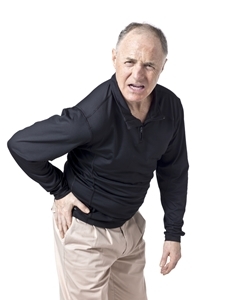Since the hip joint supports much of the body's weight, many people grapple with hip pain at some point in their lives, which is where you come in as a travel physical therapy professional. The hip is built to withstand repeated motion, but the body's largest ball-and-socket joint may begin to wear down with age and use. Muscles and tendons get overused, the bone itself may be damaged from a fall or injury, but the most common reason behind hip pain is greater trochanteric bursitis.
Greater trochanteric bursitis, also called greater trochanteric pain syndrome, is an irritation of the bursa, a fluid-filled sac located on top of the greater trochanter, which is the bony prominence of the femur that connects to the hip bone. The bursa allows smooth movement between the two uneven surfaces. While the condition occurs most frequently in moderately active, middle-aged females or those who have recently increased their workout regimen, it affects both active and inactive individuals.
How your hip works
First off, let's take a look at the mechanics of the hip joint. The femur attaches to the pelvis in a way that allows us to walk and move without the grinding of the two bones. Whenever you use the hip, a cushion of cartilage helps prevent friction between the hip bone and the socket.
Greater trochanteric pain syndrome results from repetitive friction to the bursa or damage to the tissues surrounding the hip. A combination of muscular weakness and tightness may leave the bursa susceptible to this grinding on the outside of the hip. However, it can be treated with safe exercises that are instructed by those on travel physical therapy jobs.
Causes of greater trochanteric bursitis
There are a number of different factors that may trigger the condition, including:
- Improper technique with repetitive activities
- Iliotibial band tightness, which is a thick band of tissue that runs along the outside of the leg from the pelvis to the knee
- Hip muscle tightness or weakness
- Abnormal hip or knee structure or mechanics
- Change in exercise routine or sport activity
Symptoms
The main symptom is pain around the outside of the upper thigh. Patients of travel PT professionals may also experience tenderness on the outside of the hip, pain in the hip that may at first feel sharp, then evolve to a dull ache radiating on the side of the leg. Others may come to you with stiffness from prolonged sitting.The majority of cases result from minor injury or inflammation to tissues in the upper trochanter. While the condition often goes away on its own, many patients consult travel PT professionals to reduce pain.
Treatment
To treat greater trochanteric bursitis, travel physical therapy professionals can prescribe a combination of stretching and strengthening activities that decrease irritation in the hip and work to resolve pain. At first, the most common pain-relief strategy is applying ice to the area and resting from certain activities for a period of time.
Range-of-motion techniques are also helpful to loosen the hip area. As a physical therapist, you may have to focus on the back, hip and knee joint, which could be moving improperly and causing increased tension at the greater trochanter. Instruct your patient with self-stretching techniques to the lower body to reduce this tension and restore normal motion.
If the injury was caused from weakness of the supporting muscles, it's best to give your patient an individualized resistance program. This will likely include the core and lower extremities.
Once the pain, motion and strength improve, you can advise your patient to safely transition back into more challenging activities. Be sure to have him or her concentrate on controlled movements at first.
Typically, imaging techniques such as X-ray or MRI are not needed to diagnose greater trochanteric bursitis.

